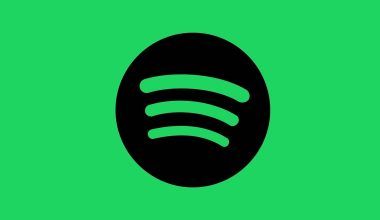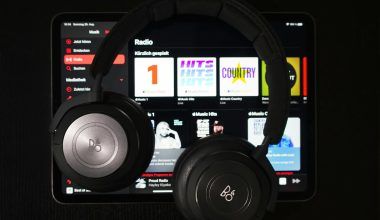The dream of sharing your music with the world has never been more accessible. Thanks to platforms like Spotify, independent artists now have the opportunity to showcase their work without needing a record label. If you’re wondering how to share your music on Spotify without a label, you’re in the right place. This guide will walk you through everything you need to know to get your music on Spotify, build an audience, and thrive as an independent artist.
Whether you’re a budding musician or someone looking to explore new ways of reaching listeners, this process doesn’t have to feel overwhelming. Let’s dive into the step-by-step approach that makes the whole journey smoother.
Why Sharing Music on Spotify Matters
Spotify is one of the most popular music streaming platforms worldwide. With millions of listeners tuning in daily, it offers an incredible stage for independent artists. Unlike traditional methods that required labels for distribution, Spotify allows creators to connect directly with their audience.
Uploading your music independently not only gives you creative freedom but also ensures that you retain more revenue from your hard work. Plus, engaging with fans directly fosters a deeper connection, making your journey as an artist even more fulfilling.
Understand the Basics of Music Distribution
Before your tracks can appear on Spotify, they need to be distributed. Music distributors act as a bridge between artists and streaming platforms. Think of them as the middlemen who ensure your music reaches Spotify and other streaming services.
Luckily, many distributors cater specifically to independent artists. Some popular choices include:
- Deliver My Tune: Known for its user-friendly interface and fast distribution.
- TuneCore: A reliable platform that helps you retain all your rights.
- CD Baby: Offers a one-time payment model instead of annual fees.
- Amuse: A free option for artists who are just starting out.
These platforms simplify the process of uploading your music and make sure it meets Spotify’s standards.
Prepare Your Music for Release
To make a lasting impression, ensure your music is polished and ready for distribution. Here’s how:
- Professional Recording: Use high-quality recording equipment or work with a studio.
- Mixing and Mastering: Invest in professionals or learn the basics to refine your tracks.
- Metadata: Add all the necessary details like track titles, credits, and artwork.
Create an Artist Profile on Spotify
Spotify for Artists is a free tool that gives you control over your artist profile. You can use it to:
- Upload an artist bio and photos.
- Share playlists and upcoming releases.
- Access valuable insights about your listeners.
Signing up is straightforward, and once verified, you can update your profile as often as needed.
Promote Your Music Effectively
Sharing your music on Spotify without a label means taking on promotional responsibilities. Here are some strategies to help your music stand out:
- Leverage Social Media: Share your Spotify links on Instagram, TikTok, Twitter, and Facebook.
- Collaborate with Playlists: Reach out to independent playlist curators to feature your tracks.
- Engage with Your Fans: Respond to comments, host Q&A sessions, or perform live streams.
- Run Ads: Use platforms like Spotify Ad Studio or social media ads to increase visibility.
Build Your Brand as an Independent Artist
Having a unique identity sets you apart from other artists. Focus on building a brand that resonates with your music style and audience.
- Develop a Visual Identity: Design an eye-catching logo or album art.
- Be Authentic: Share behind-the-scenes stories, struggles, and successes to connect with your audience.
- Stay Consistent: Release music regularly to keep your listeners engaged.
Engage with Data and Analytics
One of the perks of Spotify for Artists is access to detailed analytics. These insights can help you understand:
- Who is listening to your music.
- Where your audience is located.
- What tracks are performing best.
Use this data to refine your promotional strategies and identify potential growth opportunities.
Monetize Your Music
Sharing your music on Spotify without a label doesn’t mean you have to forego earnings. Spotify pays artists based on streams, so focus on growing your listener base. Additionally, explore other revenue streams such as:
- Selling merchandise.
- Booking gigs or virtual concerts.
- Licensing your music for films, ads, or games.
Benefits of Being an Independent Artist on Spotify
While not having a label means more work, it also brings numerous advantages:
- Creative Freedom: No compromises on your vision or sound.
- Ownership: Retain all rights to your music.
- Closer Fan Relationships: Build a loyal community directly.
Challenges to Expect
Going independent has its challenges, but being prepared makes a difference:
- Limited Resources: You’ll need to manage production, promotion, and finances.
- Competition: Millions of tracks are uploaded daily, so standing out requires effort.
- Consistency: Regular releases are crucial to maintaining visibility.
Conclusion
Sharing your music on Spotify without a label is an exciting journey that puts you in control of your artistic career. While it requires dedication and effort, the rewards of connecting with a global audience and retaining your creative freedom are unmatched.
Start by choosing a distributor, preparing your music, and promoting it strategically. With the right approach and persistence, you can make your mark in the music industry. So, take the first step today and share your music on Spotify without a label—you’re closer to your dreams than you think!
For further reading, explore these related articles:
- Release Your Album on YouTube Music with 100% Royalties
- How to Release Your Album on YouTube Music Without a Label
For additional resources on music marketing and distribution, visit DMT RECORDS PRIVATE LIMITED.






